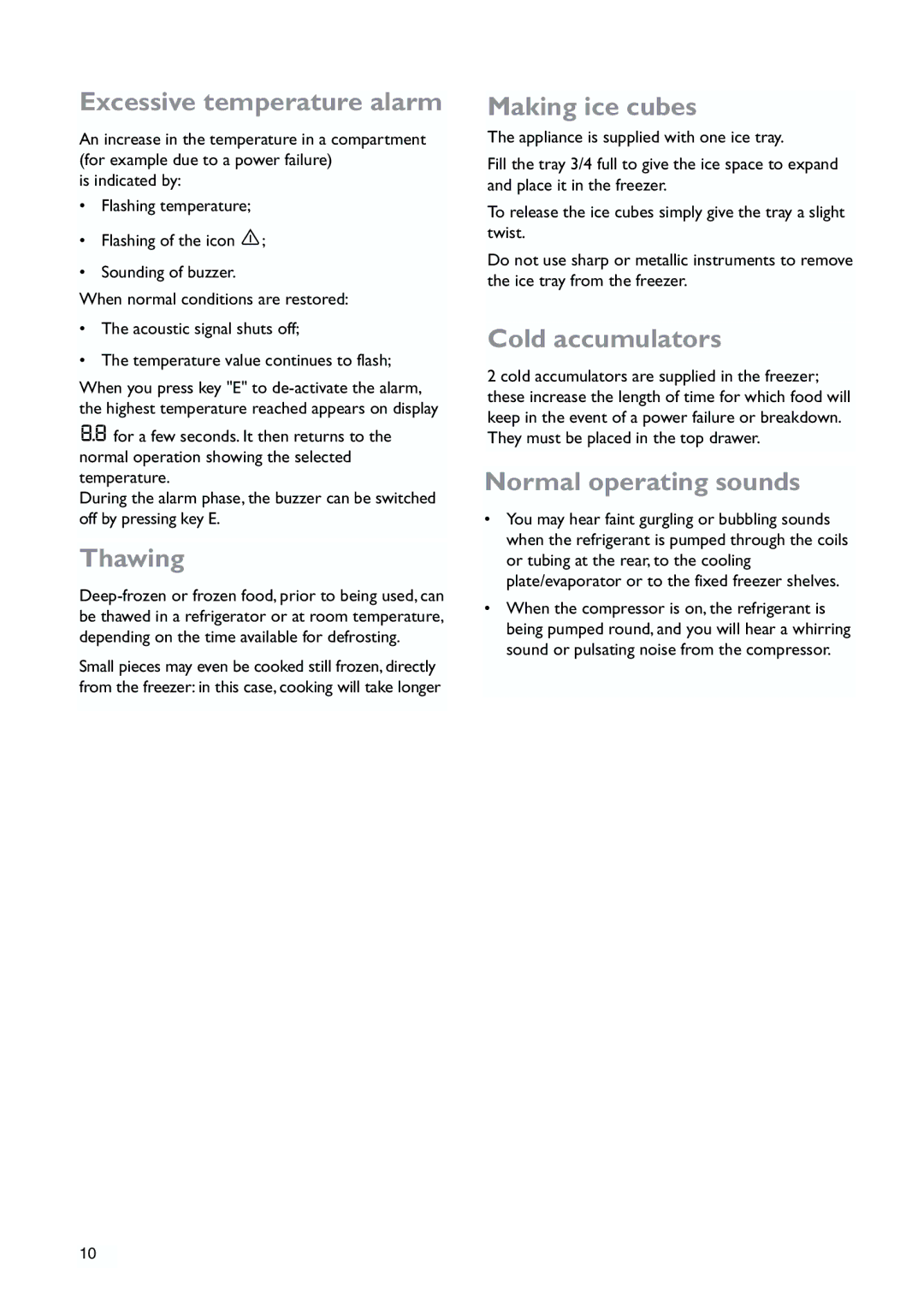JLFZW1810 specifications
The John Lewis JLFZW1810 is a modern and versatile freezer that combines practicality with appealing aesthetics, ideal for any household looking to optimize their food storage solutions. This appliance is designed with a focus on efficiency and user-friendly features, making it a popular choice among consumers.One of the standout features of the JLFZW1810 is its spacious interior, offering a generous capacity that allows users to store a wide variety of frozen goods. With adjustable shelving and easy-access drawers, organizing frozen items has never been more straightforward. The freezer accommodates everything from bulk groceries to specialty items, ensuring that families can stock up while keeping their essentials easily accessible.
Energy efficiency is a significant consideration in the design of the JLFZW1810. The appliance boasts an impressive energy rating, helping households minimize their environmental impact while keeping electricity costs in check. This energy-saving technology doesn't compromise performance, as the freezer maintains a consistently low temperature to preserve food effectively.
The JLFZW1810 utilizes advanced freezing technologies that enhance its performance. Features like Frost-Free technology prevent the buildup of ice, eliminating the need for manual defrosting. This not only saves time but also ensures that the freezer's capacity is maximized without the hindrance of ice accumulation.
User convenience is further emphasized through the design of the control panel. The JLFZW1810 includes easy-to-read digital displays and intuitive controls, allowing users to set temperatures, activate quick-freeze functions, and monitor performance with ease. Additionally, the appliance is equipped with a temperature alarm that alerts users in the event of any fluctuations, providing peace of mind regarding food safety.
Aesthetic considerations are not overlooked in the design of the JLFZW1810. With a sleek exterior finish, this freezer can seamlessly integrate into various kitchen environments, enhancing the overall look while serving its practical purpose.
In conclusion, the John Lewis JLFZW1810 is a top-tier freezer that effectively balances capacity, efficiency, and user-friendly features. Its modern technology and design cater to the diverse needs of today’s consumers, making it an excellent addition to any kitchen. Whether for families, individuals, or anyone looking to streamline their food storage, the JLFZW1810 stands out as a reliable and efficient choice.

